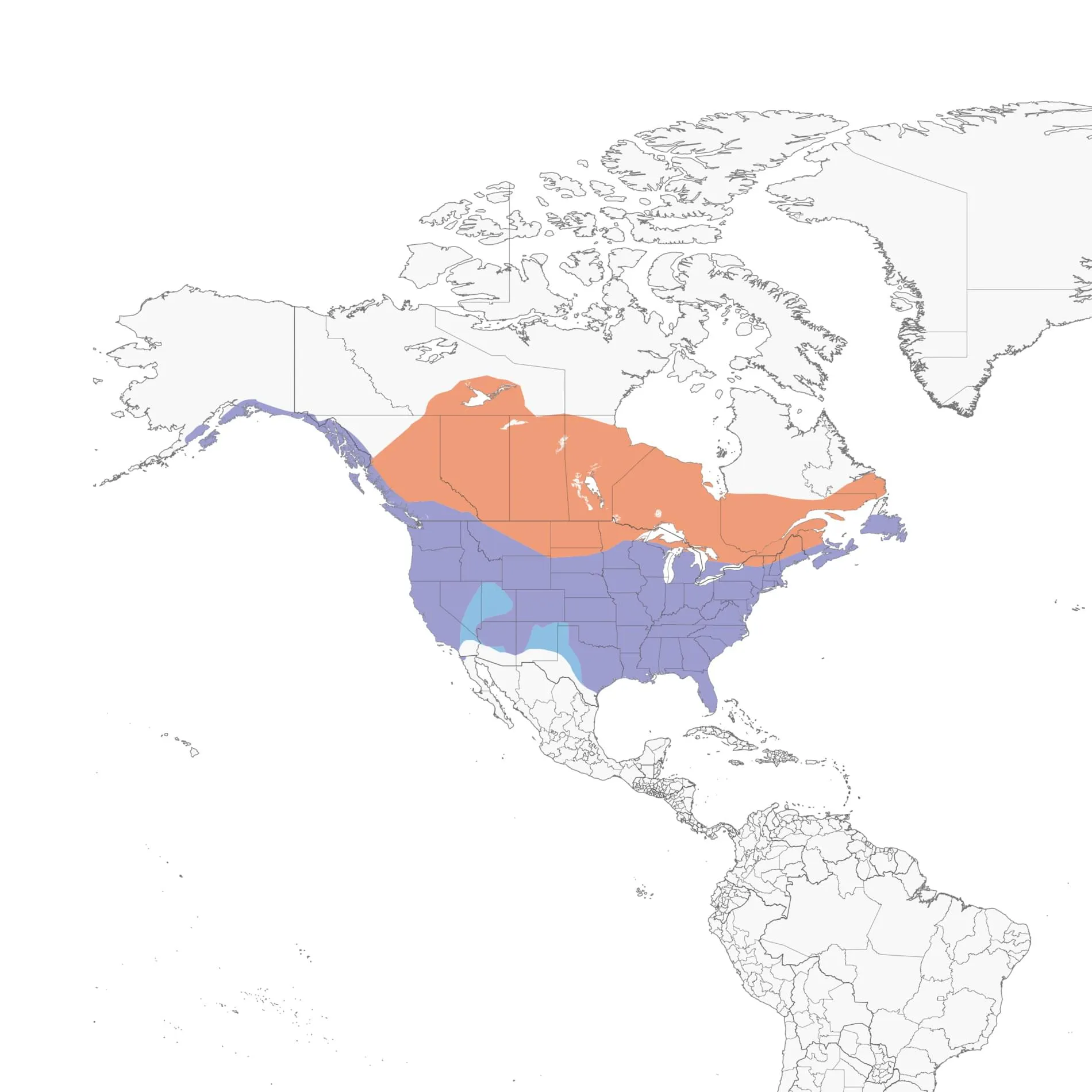The American Crow (Corvus brachyrhynchos) is a highly intelligent and adaptable bird species commonly found across North America. With their glossy black plumage and familiar “caw-caw” calls, American Crows captivate birdwatchers and backyard observers alike. Whether you’re spotting them in urban parks or rural fields, understanding their habitat preferences, diverse diet, social behaviors, and nesting routines provides valuable insights into these resourceful corvids. This guide draws from expert observations by the Cornell Lab of Ornithology to help you appreciate and coexist with American Crows in your area.
These birds showcase fascinating adaptations that allow them to thrive alongside humans. For comparison, check out blue jay behavior in the fall, where seasonal changes influence similar corvid activities.
 American Crow range map showing eBird sightings across North America
American Crow range map showing eBird sightings across North America
View the dynamic map of eBird Sightings for real-time distribution data.
Range and Distribution
American Crows occupy a vast range throughout North America, from southern Canada to northern Mexico, and as far west as the Pacific coast and east to the Atlantic. They are year-round residents in most areas but may migrate short distances in harsh winters. Their presence is widespread due to adaptability, though they are absent from dense unbroken forests and extreme deserts. According to eBird data, sightings peak in open landscapes, reflecting their preference for accessible foraging grounds. This broad distribution underscores their success in diverse climates, making them one of the most common bird species encountered by enthusiasts.
Habitat
American Crows are highly adaptable and inhabit any open area providing a few trees for perching and reliable food sources. They frequently utilize both natural and human-altered environments, such as farmlands, pastures, landfills, city parks, golf courses, cemeteries, residential yards, vacant lots, highway medians, feedlots, and edges of rivers, streams, marshes, and beaches. While they generally avoid vast unbroken forests, they appear in forest campgrounds and venture into woodlands along roads and waterways. Deserts are typically off-limits due to scarce water and food. This versatility allows them to flourish in urban settings, where they scavenge effectively, and rural expanses, contributing to ecosystem balance by controlling pests.
Experienced birders note that providing scattered trees and open ground in your yard can attract crows, enhancing local biodiversity while following guidelines from authoritative sources like the Cornell Lab.
Food and Diet
As omnivores, American Crows consume an extensive variety of foods, including grains, seeds, nuts, fruits, berries, and numerous small animals like earthworms and mice. They devour insects—many of which are agricultural pests—along with aquatic life such as fish, young turtles, crayfish, mussels, and clams. Nest predators by nature, they target eggs and nestlings of species including sparrows, robins, jays, terns, loons, and eiders. Carrion and garbage also feature prominently in their diet, showcasing their opportunistic feeding strategy. This broad palate not only sustains them but aids in waste management and pest control in human-dominated landscapes.
For insights into related foraging patterns, see black crowned night heron behavior.
Veterinarians and ornithologists emphasize that while crows benefit farms by eating pests, protecting songbird nests with deterrents can promote balanced ecosystems.
Behavior
American Crows are exceptionally social, typically observed in groups rather than solitary. Beyond communal roosting and foraging, they form year-round family units comprising the breeding pair and offspring from the prior two years, with the entire group collaborating to rear young. Winter roosts can swell to hundreds of thousands, creating spectacular spectacles. Renowned for intelligence, they solve problems collectively, identify novel food sources, and even use tools in experiments. This cleverness sometimes leads to conflicts near dumpsters or roosts, but it also fascinates observers. A key behavior is “mobbing,” where crows harass predators like hawks or owls in coordinated attacks to protect territory.
Their social dynamics resemble those in other species; explore eastern phoebe nesting behavior for contrasts in family cooperation.
Field studies from the Cornell Lab highlight how recognizing individual crows by voice and face enhances research, underscoring their cognitive prowess comparable to some primates.
Nesting
Breeding pairs construct the nest together, often assisted by young from the previous year. Built primarily from medium-sized twigs, the structure features an inner cup lined with pine needles, weeds, soft bark, or animal hair for insulation and comfort. Nest dimensions vary widely: typically 6-19 inches across externally, with the cup measuring 6-14 inches wide and 4-15 inches deep. Placed high in trees, these nests are reused or rebuilt annually. Both parents incubate eggs, and family helpers feed fledglings, ensuring high survival rates.
Nesting parallels other birds, such as red kite mating behaviour and robins mating and nesting.
In summary, American Crows exemplify adaptability through their flexible habitats, opportunistic diets, intelligent behaviors, and cooperative nesting. By respecting their role in nature—while mitigating conflicts like roosting nuisances—you can foster positive interactions. Consult local wildlife experts or the Cornell Lab for tailored advice. Discover more bird insights on our site!
References
- Cornell Lab of Ornithology. “American Crow.” All About Birds. https://www.allaboutbirds.org/guide/American_Crow
- eBird. “American Crow Sightings.” Cornell Lab. https://ebird.org/ebird/map/amecro
